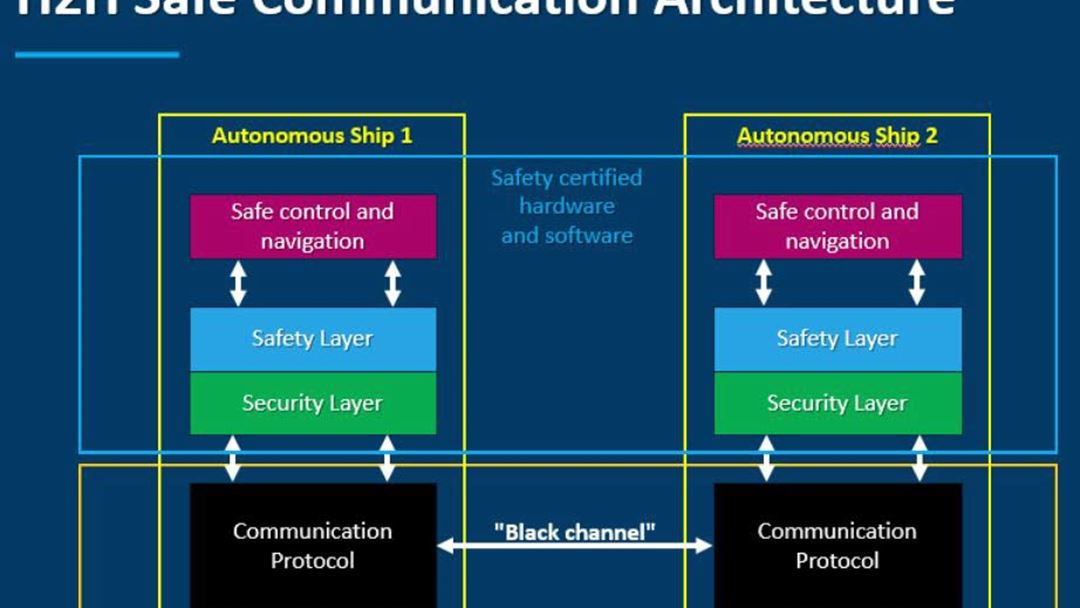WP05 Safe and Secure Communication
Lead:
SINTEF Digital
Safe Communication for Autonomous Ships
- For autonomous ships to be acceptable for commercial use, they must be at least as safe as conventional vehicles in similar service.
- It is expected that future regulations will require control and navigation systems for autonomous ships to be certified according to functional safety requirements.
- A communication solution supporting an autonomous operation will thus be considered as an integral part of the safety system, and require safety certification.
Safety
- Safety can be defined as the freedom from unacceptable risk of harm to humans, either directly or indirectly as a result of damage to property or to the environment.
- Safety can be achieved through various mechanisms: physical barriers, work processes, training, testing, monitoring and control, emergency response.
- Functional safety are barriers in the shape of electrical and programmable control systems which must operate correctly in order to ensure safe operation.
Functional Safety: Life cycle management
- Functional safety requirements governs the entire life cycle of a safety system, from concept and specification, through design and development, to maintenance and decommissioning.
- Developing a safety system is much more complex, time consuming and costly than a similar non-safety system.
Safe Communication
- Certification according to functional safety standards is too costly and time consuming for providers of wireless communication solutions.
- To provide safe communication despite using an "unsafe" communication protocol, an application level end-to-end safety architecture is proposed.

